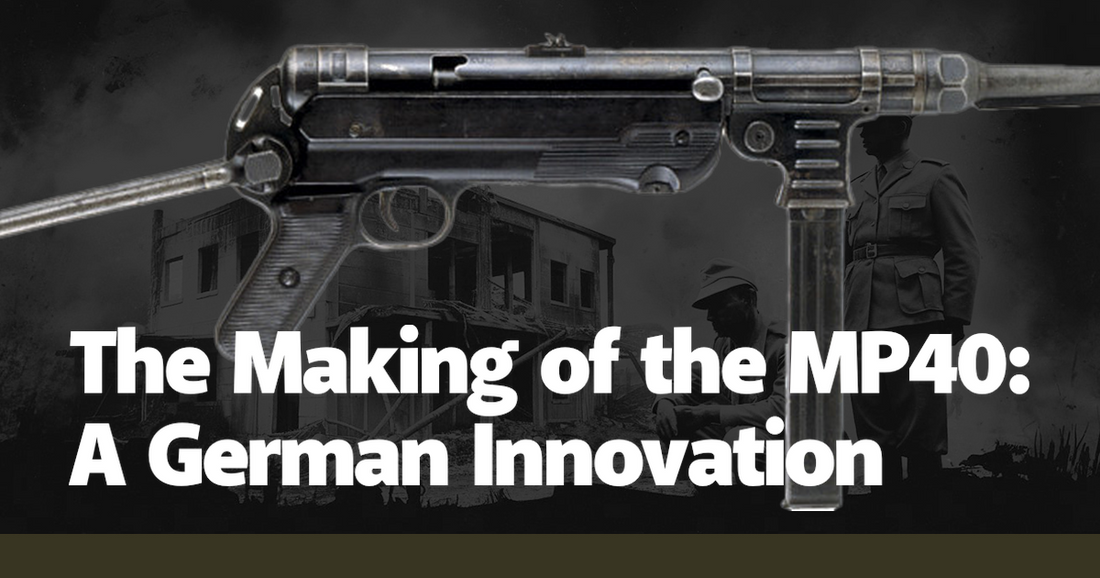The MP40, or Maschinenpistole 40, stands as one of the most iconic firearms of World War II, emblematic of German engineering prowess and tactical innovation. Its development was not merely a product of technological advancement but also a response to the evolving needs of modern warfare. The story of the MP40 begins in the late 1930s, a period marked by rapid military advancements and the looming threat of global conflict. The German Wehrmacht, recognizing the limitations of existing firearms, sought a weapon that could provide greater firepower and versatility. The MP40 was conceived to address these needs, offering a blend of reliability, ease of use, and deadly efficiency.
The MP40 was an evolution of its predecessor, the MP38, which itself was a groundbreaking design. The MP38 had already introduced several innovative features, such as a folding stock and a simplified blowback mechanism, but it was the MP40 that truly refined these concepts. One of the most significant changes was the shift from milled to stamped steel parts, which not only reduced manufacturing costs but also sped up production. This change was crucial as Germany ramped up its war efforts, needing to equip its troops quickly and efficiently. The MP40's design also incorporated bakelite, an early form of plastic, for the pistol grip and other non-essential parts, further streamlining production without compromising durability.
The MP40's practical design made it a favorite among German soldiers. Its compact size and folding stock made it ideal for paratroopers, tank crews, and infantry units. The weapon's 9mm Parabellum cartridge provided a balance of manageable recoil and stopping power, making it effective in both close-quarters combat and mid-range engagements. Anecdotes from the front lines often highlight the MP40's reliability under harsh conditions. Soldiers appreciated its simplicity, which allowed for quick disassembly and maintenance in the field. Unlike many contemporary firearms, the MP40 could be operated by soldiers with minimal training, a crucial factor in the chaotic and fast-paced environment of World War II.
One of the most compelling aspects of the MP40 was its impact on infantry tactics. The weapon's high rate of fire and ease of use enabled new forms of combat, emphasizing mobility and suppressive fire. German infantry units could now lay down a significant volume of fire while advancing, disrupting enemy formations and gaining the upper hand in engagements. This shift was particularly evident in urban combat scenarios, where the MP40's compact design allowed soldiers to maneuver through tight spaces and engage enemies at close range. The weapon's influence extended beyond the German military, as captured MP40s were often used by Allied forces and resistance fighters, further testament to its effectiveness and reliability.
The MP40 also played a role in shaping post-war firearms development. Its design principles influenced many subsequent submachine guns, including the American M3 "Grease Gun" and the Soviet PPS-43. The concept of using stamped metal parts and simplified manufacturing processes became a standard in the arms industry, driven by the need for efficient mass production. The MP40's legacy can be seen in modern firearms that prioritize ease of use, reliability, and cost-effective production. It set a precedent for future designs, proving that a weapon could be both innovative and practical without sacrificing performance.
Despite its many strengths, the MP40 was not without its flaws. The weapon's open-bolt design, while simplifying the firing mechanism, also made it prone to dirt and debris entering the action, potentially causing jams. Additionally, the 32-round magazine, though generous, was known for its tendency to misfeed, particularly when fully loaded. These issues, however, were relatively minor in the grand scheme of the war, and the MP40's overall performance remained highly regarded. Soldiers often found ways to mitigate these problems, such as by keeping the weapon clean and loading the magazine with fewer rounds to ensure reliable feeding.
The cultural impact of the MP40 cannot be understated. It has become a symbol of World War II, frequently depicted in films, documentaries, and video games. Its distinctive appearance and association with German forces have made it an enduring icon of the era. The MP40's presence in popular culture serves as a reminder of the technological and tactical innovations that emerged during the war, as well as the human stories behind the weapon. Veterans who wielded the MP40 often speak of it with a mix of respect and nostalgia, acknowledging its role in their wartime experiences.
In conclusion, the MP40 was more than just a firearm; it was a testament to German innovation and adaptability in the face of war. Its development and deployment reflected the changing nature of combat and the need for versatile, reliable weapons. The MP40's influence extended beyond its immediate use, shaping future firearm designs and tactics. Its legacy lives on not only in the annals of military history but also in the collective memory of those who lived through the conflict. The making of the MP40 stands as a remarkable chapter in the story of World War II, illustrating the interplay between technology, strategy, and human ingenuity.

